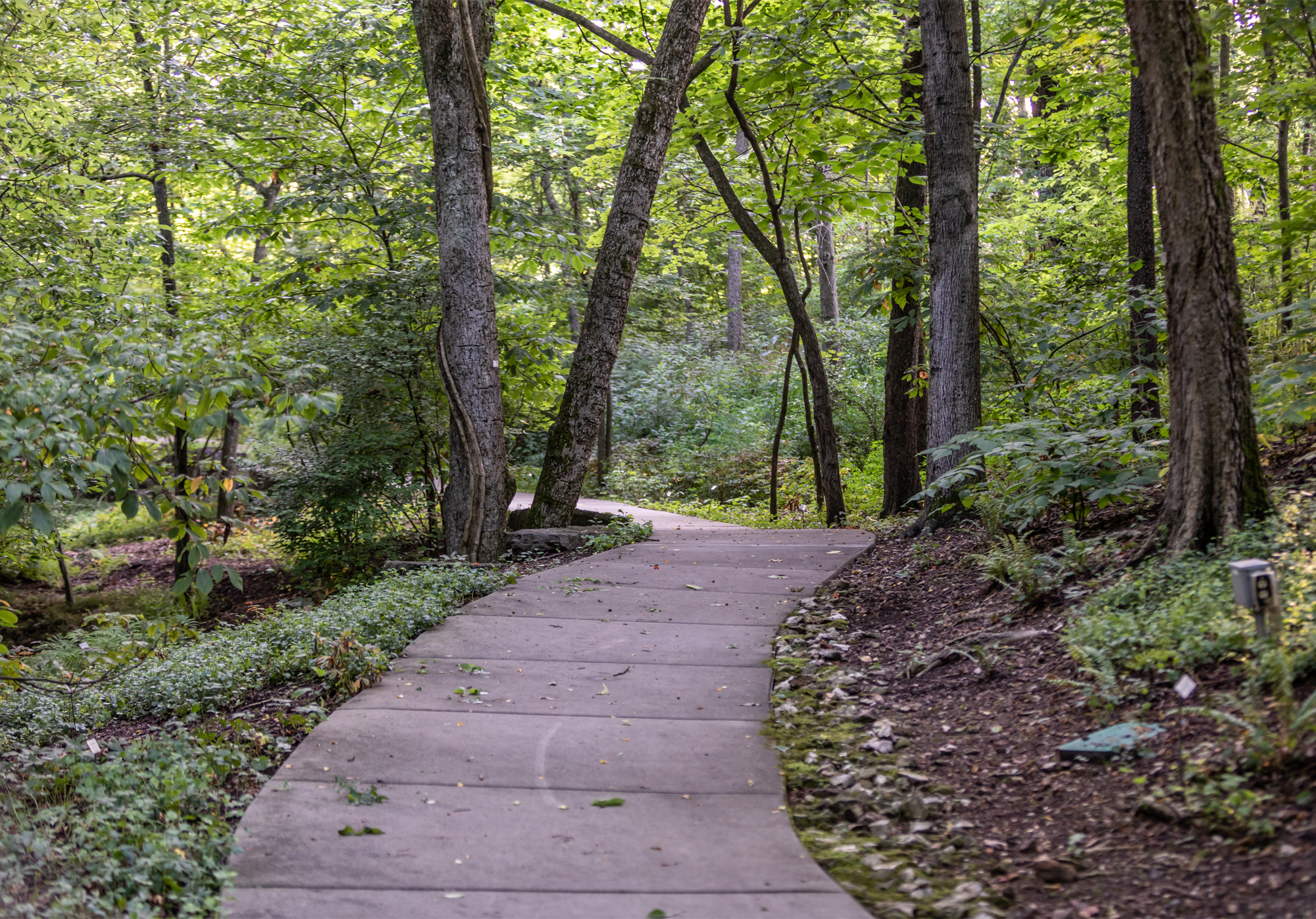The Gardens & Arboretum
at Compton Gardens & Arboretum
Surrounding the historic Compton family home, the gardens at Compton Gardens & Arboretum are a living tribute to Arkansas’s natural beauty. Originally cultivated by Dr. Neil Compton himself, these outdoor spaces have been thoughtfully preserved and expanded by our team, showcasing a wide variety of native trees, shrubs, grasses, and flowering plants.
Our living collection is organized into five distinct garden spaces. These areas reflect our mission to inspire a deeper appreciation for native plants, provide meaningful education, and promote the conservation of Arkansas’s unique natural spaces. Through interpretive signage and educational programming, visitors can experience the gardens as a year-round celebration of local ecology.
Garden Spaces
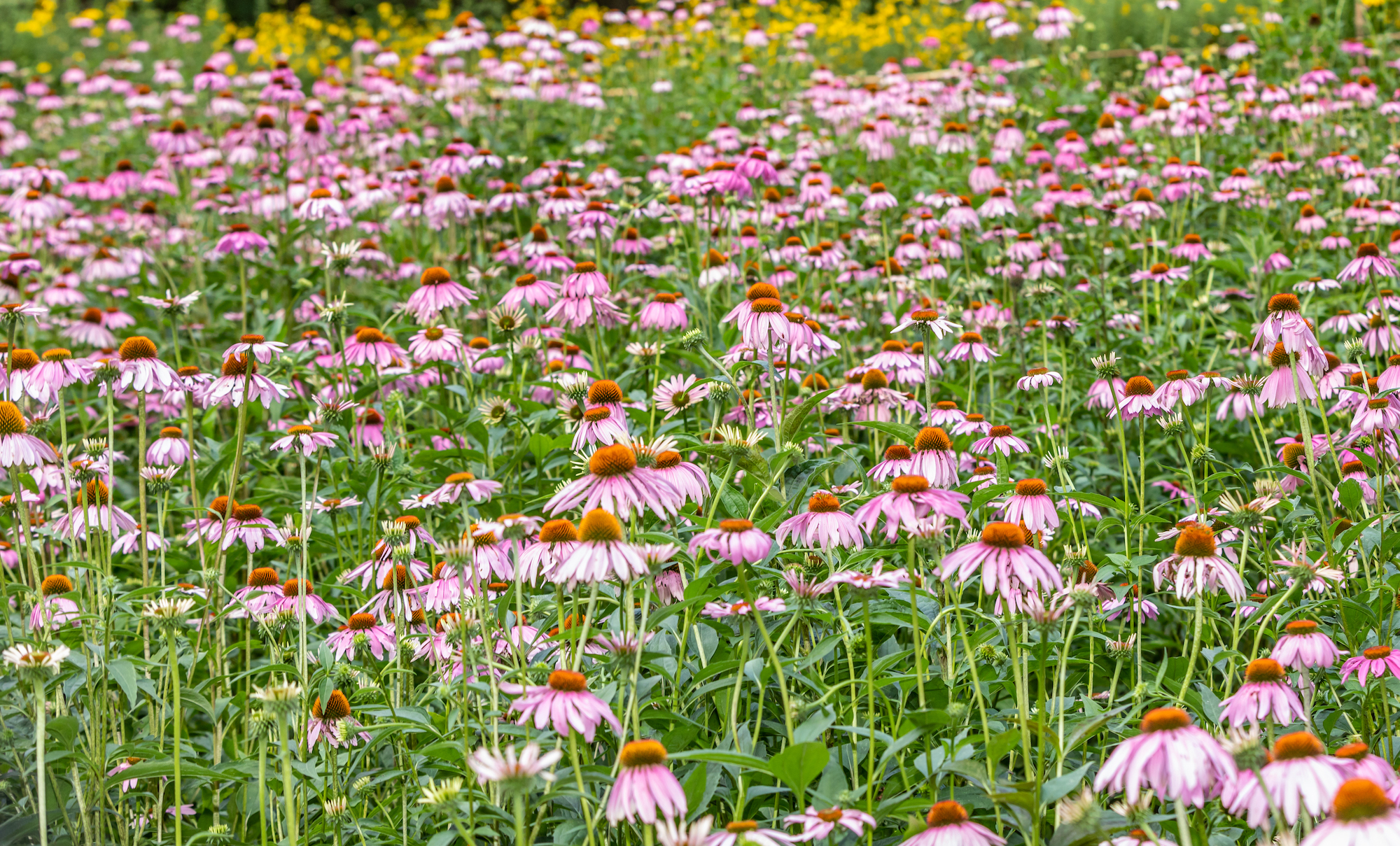
The Meadow
In spring and summer, the meadow bursts into bloom with native coneflowers, providing critical food sources for pollinators and birds—especially goldfinches, who feast on the flower seeds. A special section of the meadow is dedicated to preserving the endangered Yellow Coneflower. Meadows are defined by their diverse non-woody plant life, anchored by native grasses that stabilize the soil, create habitat, and support other plants and animals.
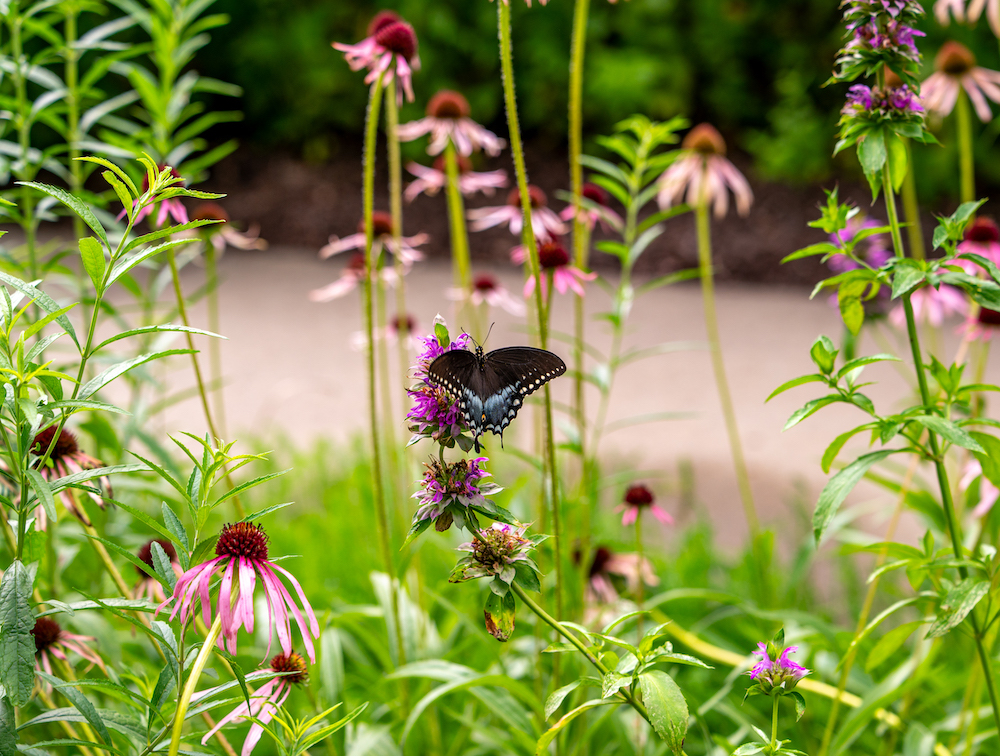
Butterfly Waystation
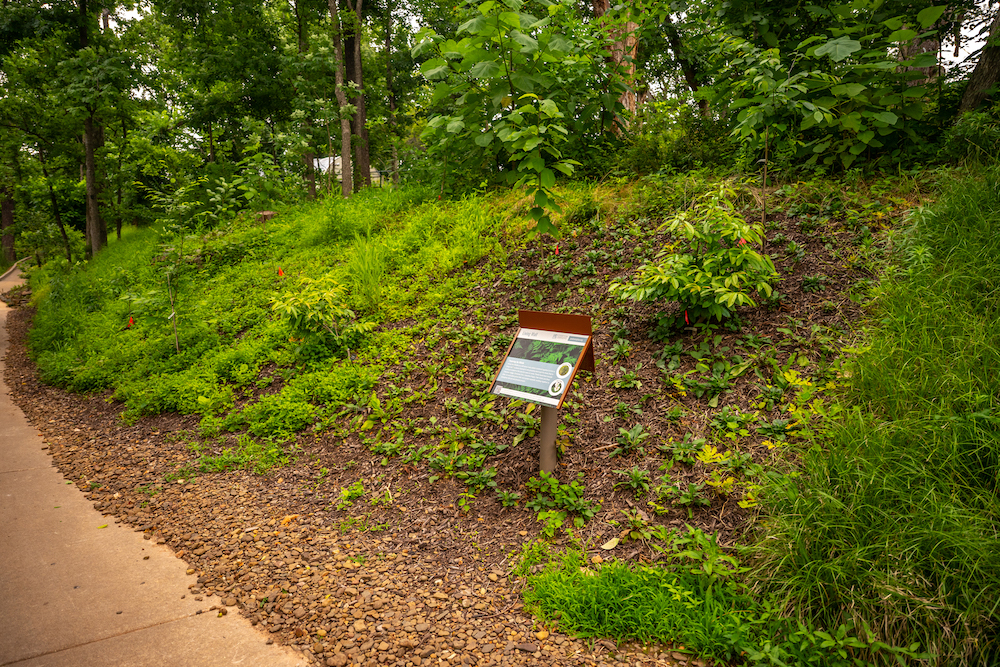
Living Wall
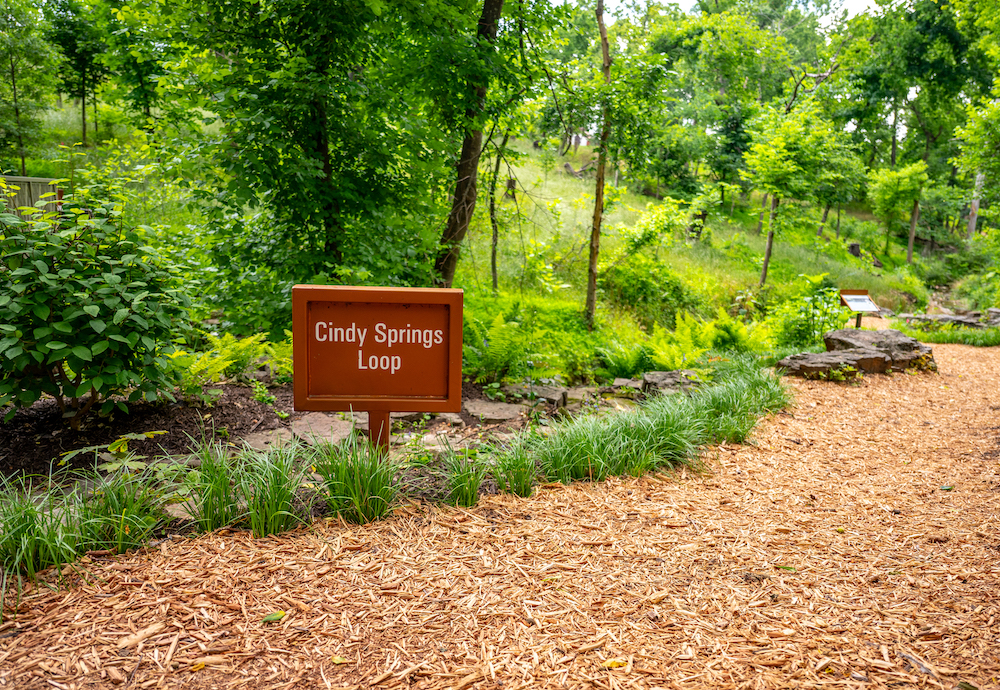
Cindy Springs
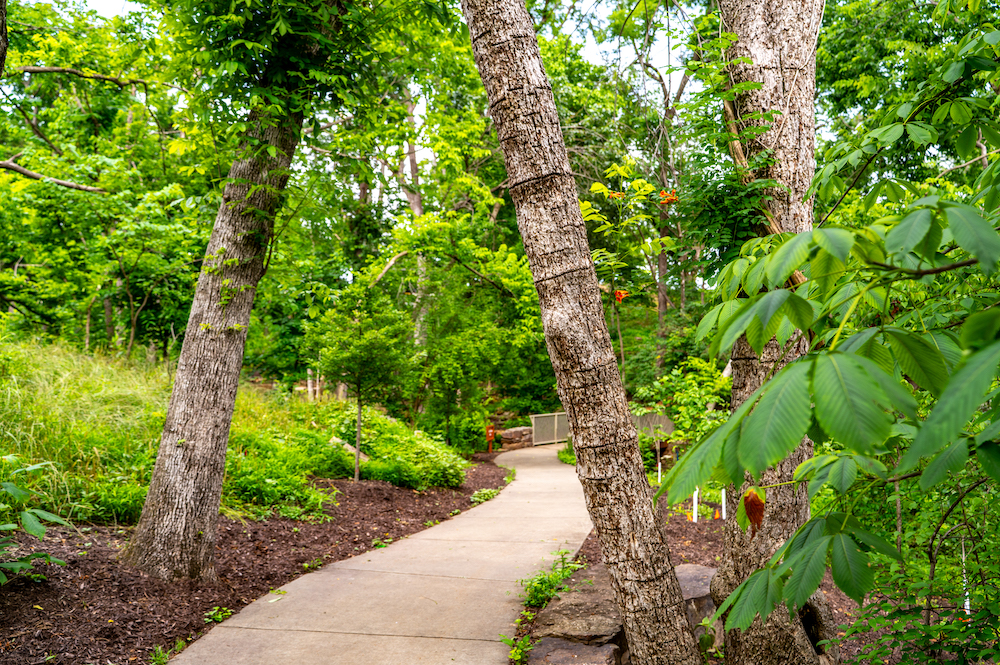
The Woodland
